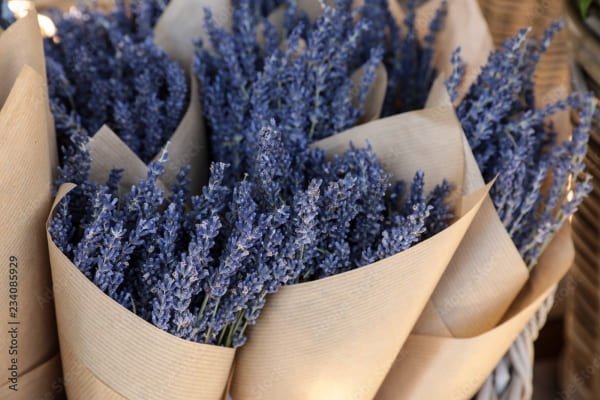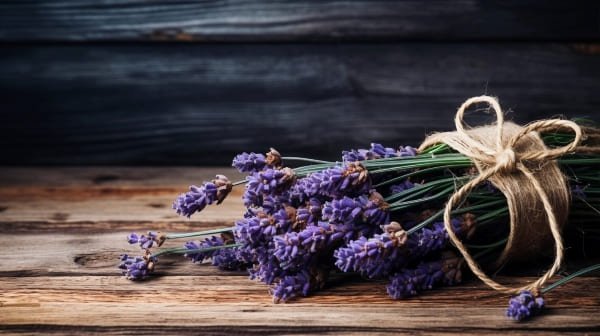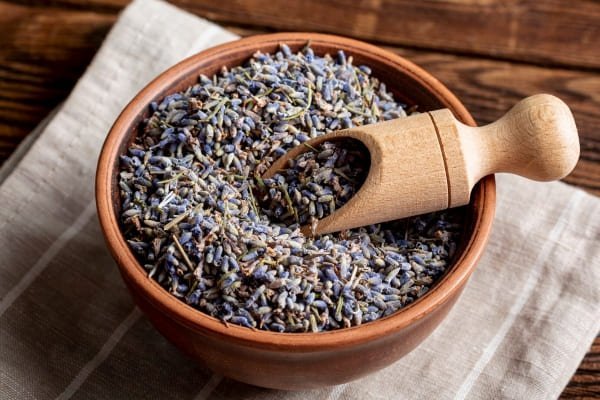


Lavender, particularly in its dried form, has been celebrated for centuries for its soothing and calming effects. Used in everything from teas to sachets, and from essential oils to bath salts, dried lavender is a cornerstone of natural remedies aimed at reducing stress, promoting relaxation, and enhancing sleep quality. But what is it about this humble purple flower that gives it such powerful calming properties? In this comprehensive exploration, we’ll dive into the science behind dried lavender, uncovering how its chemical composition interacts with our bodies and minds to bring about its renowned calming effects.
Lavender (Lavandula angustifolia) is a flowering plant in the mint family, Lamiaceae, native to the Mediterranean, Middle East, and India. It is widely cultivated for its aromatic flowers and is used in a variety of forms, including fresh, dried, and as essential oil. Dried lavender, in particular, retains much of the plant's beneficial compounds, making it a versatile ingredient in many therapeutic applications.
Lavender has been used for over 2,500 years. Ancient Egyptians used lavender in mummification and as a perfume, while the Romans used it for bathing, cooking, and scenting the air. The name "lavender" itself comes from the Latin word "lavare," which means "to wash." Throughout history, lavender has been used in folk medicine for its antiseptic, anti-inflammatory, and calming properties.
The calming properties of dried lavender can be attributed to its complex chemical composition. Lavender contains over 100 active compounds, but the most prominent ones contributing to its calming effects are linalool, linalyl acetate, and camphor.
Linalool is a naturally occurring terpene alcohol found in lavender and many other aromatic plants. It is one of the primary components responsible for lavender's distinctive fragrance and its calming effects. Linalool has been extensively studied for its anxiolytic (anxiety-reducing) properties. It is believed to interact with the brain’s neurotransmitters, particularly gamma-aminobutyric acid (GABA), which plays a role in inhibiting neural activity, leading to reduced anxiety and increased relaxation.
Linalyl acetate is another major compound found in lavender, often in higher concentrations than linalool. It is an ester that contributes to lavender's sweet, floral scent and has been shown to have sedative and relaxing effects.
Camphor is a compound with a strong aromatic odor and is present in smaller amounts in lavender. While camphor is known for its stimulating effects at high doses, in the context of lavender, its concentration is low enough that it contributes to the overall soothing profile of the plant without causing overstimulation.

The calming effects of dried lavender have been the subject of numerous scientific studies, many of which have confirmed its effectiveness in reducing anxiety, improving sleep, and promoting overall relaxation.
Several studies have explored the impact of lavender on anxiety. One of the most significant findings is that inhaling lavender's aroma can reduce anxiety levels in individuals undergoing stressful situations. For instance, a study published in the journal Phytomedicine found that inhalation of lavender essential oil reduced anxiety in patients awaiting dental treatment. Another study published in the Journal of Alternative and Complementary Medicine found that lavender aromatherapy significantly reduced anxiety levels in patients preparing for surgery.
Lavender's ability to improve sleep quality is well-documented. The calming effects of its main compounds help in reducing the time it takes to fall asleep and improve the overall quality of sleep by promoting deeper, more restful sleep stages.
Chronic stress can have a detrimental impact on both physical and mental health. The soothing properties of lavender can play a crucial role in stress management by reducing the physiological and psychological responses to stress.
Given the robust evidence supporting the calming properties of dried lavender, there are several practical ways to incorporate it into daily life to harness these benefits.
Dried lavender can be used in aromatherapy by placing it in sachets, pillows, or potpourri. The slow release of lavender's essential oils provides a continuous calming effect, making it ideal for stress relief and relaxation.
Lavender tea, made from dried lavender buds, is a popular way to consume lavender for its calming effects. The act of drinking warm tea itself is soothing, and the compounds in lavender help to enhance this relaxation.
Adding dried lavender to bath soaks or bath bombs is another effective way to use it for relaxation. The warm water helps to release the essential oils from the dried lavender, creating a spa-like experience at home.
Incorporating dried lavender into home decor not only adds a touch of natural beauty but also provides ongoing calming effects. Dried lavender can be used in wreaths, floral arrangements, or simply placed in a vase.
While dried lavender is generally safe for most people, there are some considerations to keep in mind, particularly for those with allergies or sensitivities to certain fragrances.

The calming properties of dried lavender have made it a timeless favorite in homes, spas, and wellness practices around the world. Its versatility allows it to be used in a variety of ways, from simple sachets to elaborate floral arrangements, and from soothing teas to luxurious bath soaks. The science behind lavender's calming effects only adds to its appeal, providing a solid foundation for its continued use in stress relief, sleep enhancement, and overall relaxation.
Lavender’s reputation as a calming agent is deeply rooted in cultural practices and historical traditions. From the ancient Egyptians and Romans to modern holistic healers, lavender has been cherished for its ability to soothe the mind and body. Its enduring popularity across centuries and cultures is a testament to its effectiveness and universal appeal.
In today's fast-paced world, where stress and anxiety are prevalent, the natural calming effects of dried lavender are more relevant than ever. As people increasingly turn to natural remedies for mental and physical wellness, lavender remains at the forefront of botanical solutions. Its integration into wellness products, home decor, and personal care routines continues to grow, solidifying its place as a staple in natural health.
Dried lavender is more than just a fragrant flower; it’s a powerful natural remedy with scientifically-backed calming properties. The combination of compounds like linalool, linalyl acetate, and camphor work together to reduce anxiety, promote relaxation, and improve sleep. Whether used in aromatherapy, teas, bath products, or home decor, dried lavender offers a simple yet effective way to enhance well-being and create a tranquil environment.
As research continues to uncover more about the benefits of lavender, its popularity is likely to continue. For anyone looking to incorporate natural, calming elements into their life, dried lavender remains an excellent choice. Its ease of use, accessibility, and proven effectiveness make it a timeless and valuable addition to any home or wellness routine.